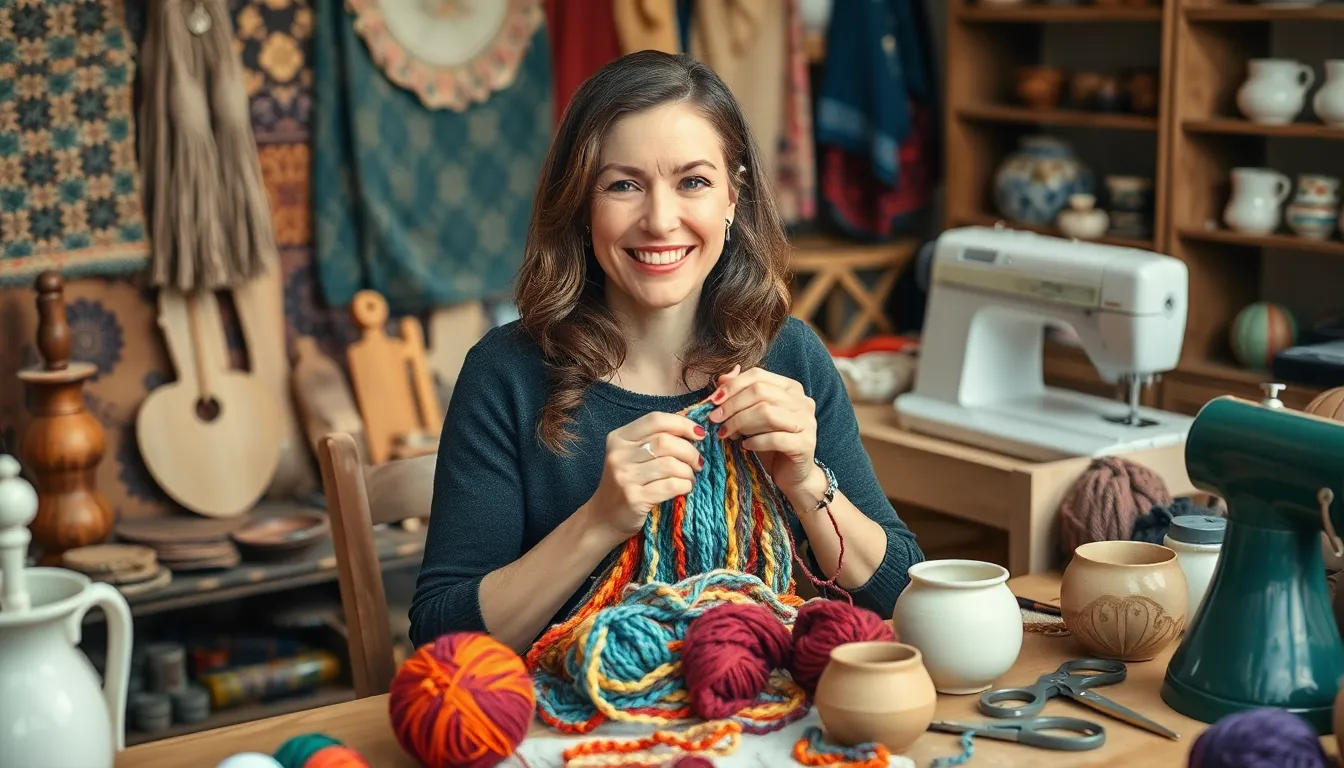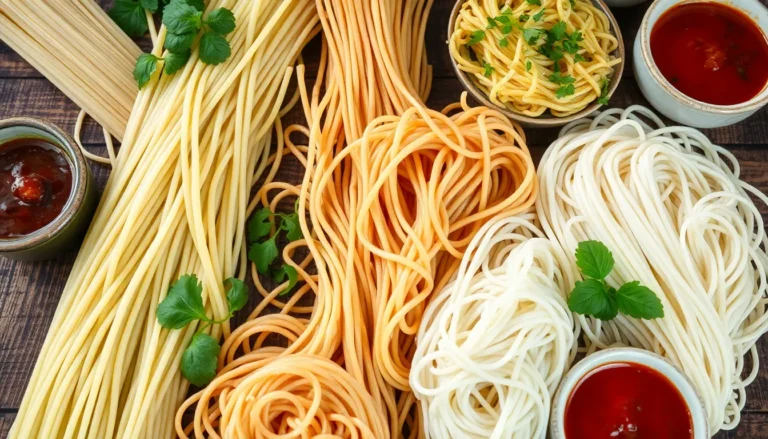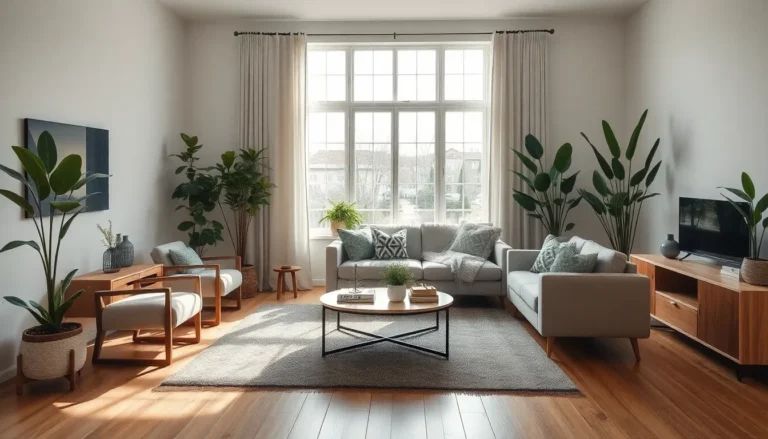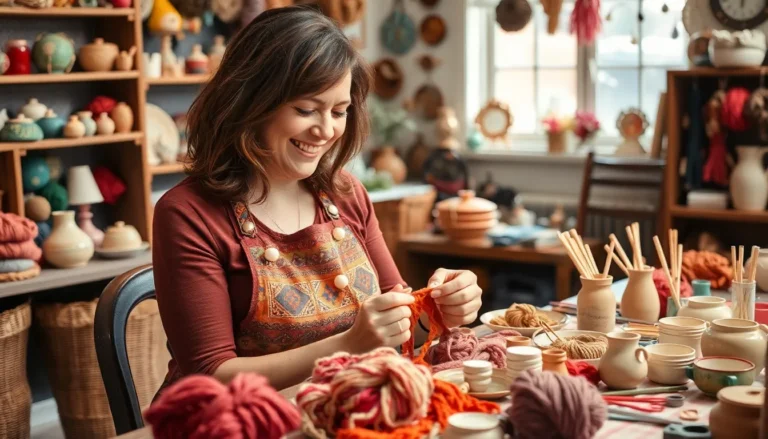Table of Contents
ToggleCrafting isn’t just a hobby; it’s a gateway to a world bursting with creativity and fun. From knitting cozy scarves to creating intricate pottery, the variety in crafts offers something for everyone. Whether you’re a seasoned pro or a curious newbie, there’s a craft waiting to ignite your passion and possibly your living room with glitter.
Understanding Variety in Crafts
Crafting encompasses various mediums and techniques, providing avenues for self-expression and creativity. It invites individuals to explore both traditional and contemporary forms, ensuring everyone finds a suitable outlet.
Definition and Importance
Variety in crafts refers to the wide range of practices, materials, and techniques available. Crafting plays a significant role in personal development, offering benefits such as stress relief, improved focus, and enhanced creativity. Engaging in different crafts nurtures individual talents and fosters a sense of community. Exploring options like woodworking, sewing, or painting encourages skill diversification, making crafting an enriching pursuit. Each craft presents unique challenges that stimulate problem-solving skills, contributing to overall growth and well-being.
Historical Context
Crafting traces its origins back to ancient civilizations, where artisans created functional and decorative items. Techniques such as weaving and pottery emerged as essential skills for survival and cultural expression. Over centuries, the rise of industrialization transformed crafting into a means of personal expression, allowing artisans to reject mass production. Today, crafting remains vital in preserving cultural heritage and driving innovation. The resurgence of interest in handmade items highlights the ongoing significance of variety in crafts, linking past traditions with modern practices and preferences.
Types of Crafts

Crafting encompasses a vast array of categories, each offering unique opportunities for creativity and skill development. The following categories highlight the diversity within the crafting world.
Textile Crafts
Textile crafts involve manipulating fabric and fibers to create various products. Knitting, crochet, and quilting represent popular techniques that yield functional and decorative items. Many crafters appreciate sewing as a way to customize clothing and home décor. Embroidery adds intricate designs to textiles, enhancing their aesthetic appeal. Materials such as cotton, wool, and silk contribute to the variety in texture and appearance. Crafters often find joy in using sustainable fabrics, infusing their projects with purpose and creativity.
Woodworking Crafts
Woodworking crafts focus on transforming raw wood into beautiful and functional pieces. Techniques like carving, whittling, and joinery highlight the skill involved in this art form. Craft enthusiasts often create furniture, decorative items, and toys using various kinds of wood, including pine, oak, and maple. Power tools and hand tools find use in this craft, allowing for precision and creativity. Many artisans value the connection to nature that woodworking offers, fostering a sense of accomplishment with each completed project.
Artisanal Crafts
Artisanal crafts encompass handmade items created with a focus on quality and unique design. Pottery stands out as a widely practiced artisanal craft, where clay is shaped and fired to create functional and decorative pieces. Glassblowing and metalworking provide additional avenues to explore, as artists utilize heat and skill to form stunning works. Handmade soaps, candles, and textiles also fall under this category, emphasizing organic materials and traditional methods. Many consumers seek out artisanal products for their authenticity, supporting local artisans and sustainable practices.
Techniques and Materials
Crafting techniques and materials vary significantly, each offering unique avenues for creativity and skill enhancement. Understanding these elements helps crafters find the right fit for their interests.
Traditional Techniques
Traditional crafting techniques maintain a rich history and emphasize cultural relevance. Knitting and crochet techniques, for instance, have been passed down through generations, often creating heirloom pieces. Quilting brings together various fabric patterns and meticulous stitching, resulting in cozy blankets. Wood carving techniques involve tools that shape raw wood into intricate designs, showcasing artisans’ skills. Pottery techniques, like wheel throwing and hand-building, create functional and decorative vessels. These processes highlight the balance of form and function, inviting crafters to connect with time-honored traditions.
Modern Innovations
Modern innovations in crafting employ advanced materials and technology, expanding creative possibilities. For example, 3D printing has revolutionized how designers approach product development, allowing for rapid prototyping. Digital quilting tools now offer programmable sewing patterns, streamlining the quilting process. Resin casting introduces unique shapes and finishes, captivating crafters in jewelry and home décor. Meanwhile, eco-friendly materials, such as organic cotton and bamboo fibers, cater to environmentally conscious creators. Embracing these innovations allows crafters to merge tradition with contemporary style, enhancing their creative expression.
Benefits of Engaging in Varied Crafts
Engaging in varied crafts offers numerous benefits that enhance well-being and enrich life experiences.
Creative Expression
Variety in crafts fosters unique avenues for creative expression. Each craft discipline allows individuals to explore their styles and preferences. Knitting, for example, enables the creation of personalized garments. Pottery invites artists to shape clay into functional pieces or sculptures. Combining different techniques cultivates individual voices, breaking the monotony in artistic approaches. Many crafters find joy in experimenting with new materials, leading to unexpected creations. This flexibility encourages limits to be pushed, forging deeper connections to personal identity and vision.
Skill Development
Engagement in diverse crafts promotes significant skill development. Learning multiple techniques enhances dexterity and adaptability. Woodworking, for instance, cultivates precision and problem-solving abilities. Each new discipline challenges crafters to acquire and refine skills. Exposure to varied crafting materials strengthens knowledge of their properties and best uses. Workshops and classes provide structured learning while fostering camaraderie among participants. Networking opportunities arise within crafting communities, allowing for knowledge sharing. Overall, skill development through varied crafts leads to increased confidence and greater creative potential.
Exploring the vast landscape of crafts opens up endless possibilities for creativity and personal growth. Each craft offers unique benefits that not only enhance skills but also provide a fulfilling outlet for self-expression. This variety encourages individuals to discover their passions and connect with others who share similar interests.
As crafting continues to evolve with modern innovations while honoring traditional techniques, it remains a significant part of many lives. Embracing different crafts enriches experiences and fosters a sense of community, making it a rewarding journey for anyone willing to dive in.







